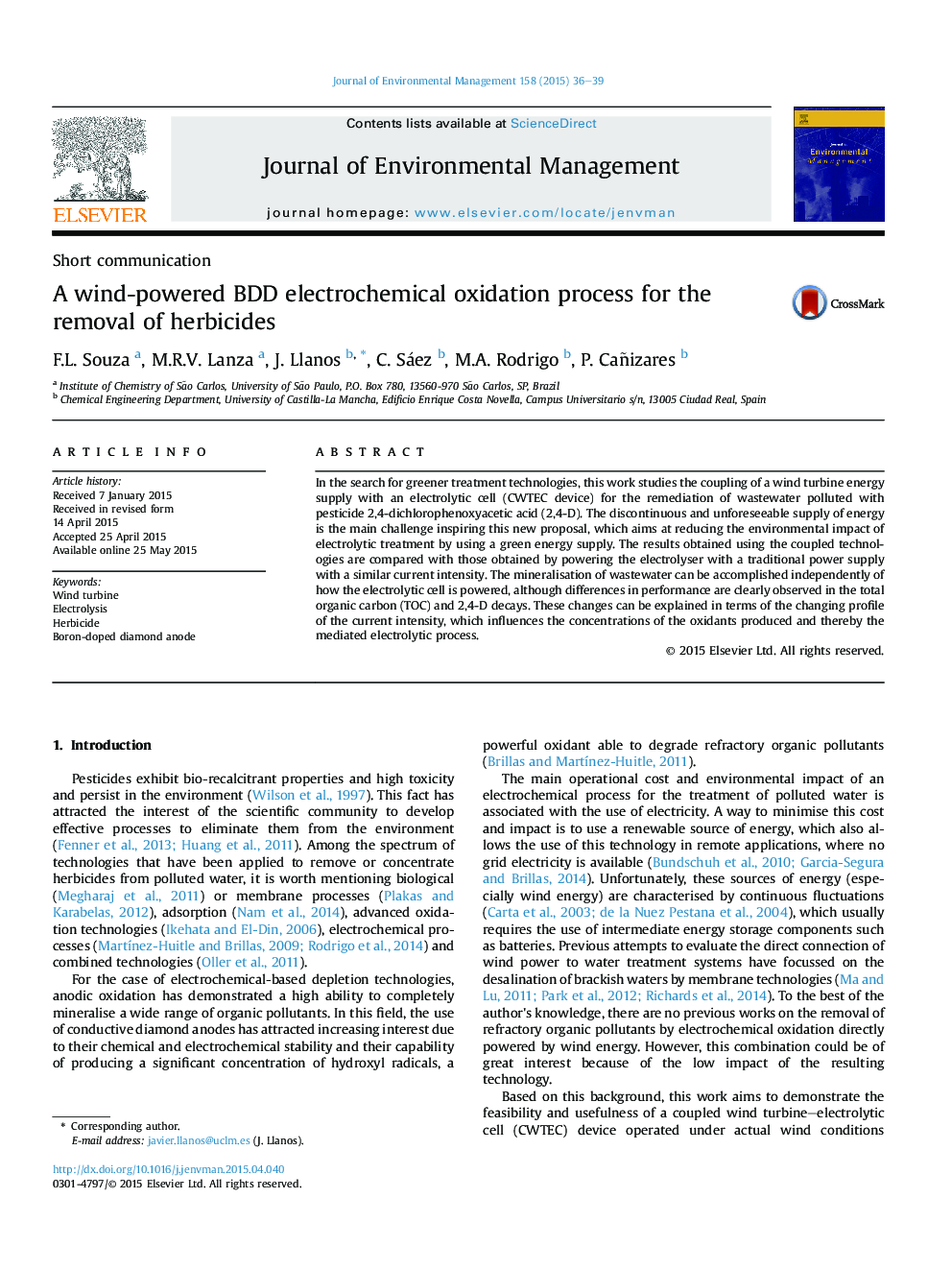| Article ID | Journal | Published Year | Pages | File Type |
|---|---|---|---|---|
| 1055576 | Journal of Environmental Management | 2015 | 4 Pages |
•This work presents a wind-powered electrochemical cell for the removal of 2,4-D.•The complete mineralisation of 2,4-D is achieved in the wind-powered system.•Charge applied to reach complete mineralisation does not depend on the power source.•Mediated oxidation is favoured in the wind-powered device.
In the search for greener treatment technologies, this work studies the coupling of a wind turbine energy supply with an electrolytic cell (CWTEC device) for the remediation of wastewater polluted with pesticide 2,4-dichlorophenoxyacetic acid (2,4-D). The discontinuous and unforeseeable supply of energy is the main challenge inspiring this new proposal, which aims at reducing the environmental impact of electrolytic treatment by using a green energy supply. The results obtained using the coupled technologies are compared with those obtained by powering the electrolyser with a traditional power supply with a similar current intensity. The mineralisation of wastewater can be accomplished independently of how the electrolytic cell is powered, although differences in performance are clearly observed in the total organic carbon (TOC) and 2,4-D decays. These changes can be explained in terms of the changing profile of the current intensity, which influences the concentrations of the oxidants produced and thereby the mediated electrolytic process.
Graphical abstractFigure optionsDownload full-size imageDownload as PowerPoint slide
